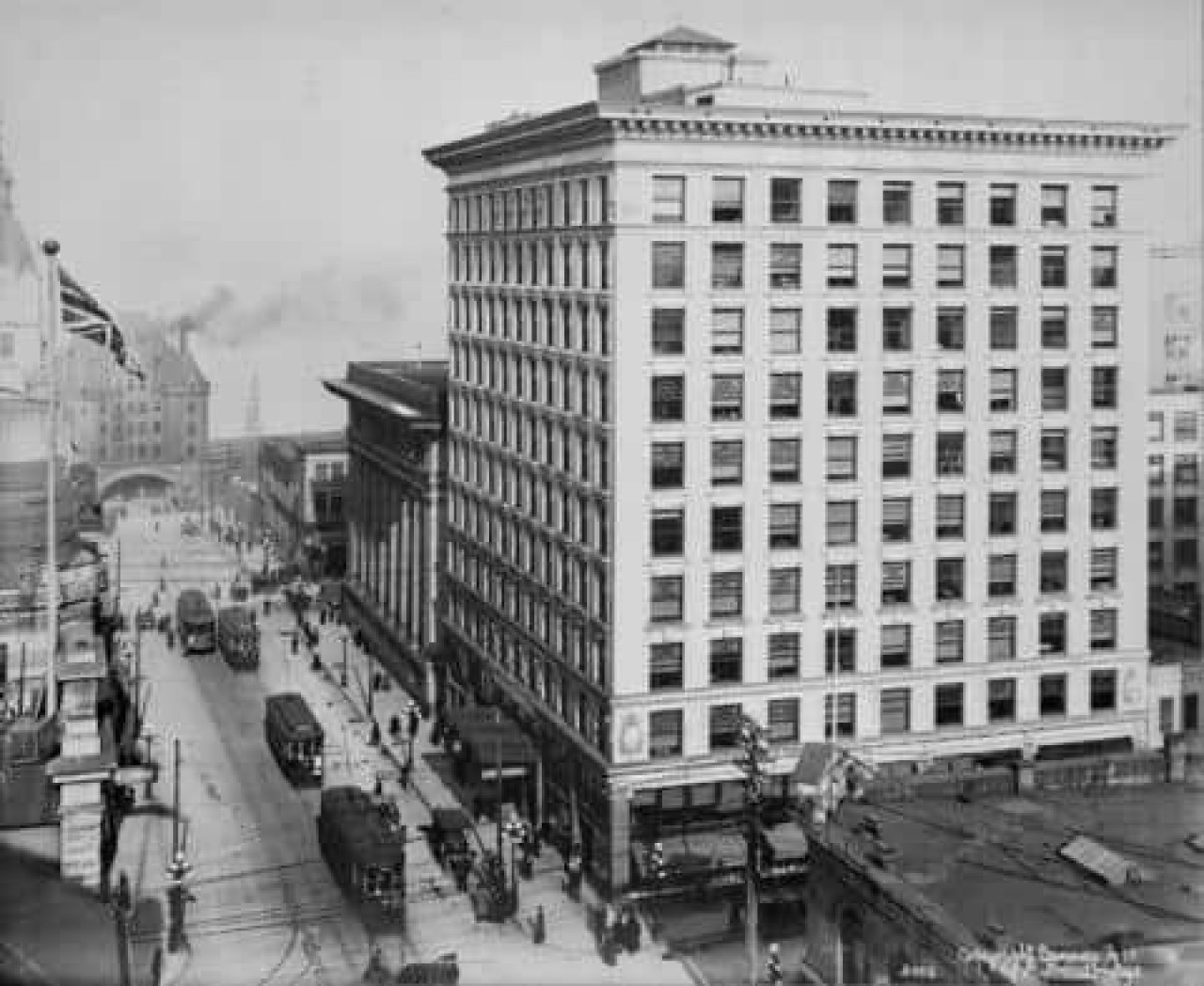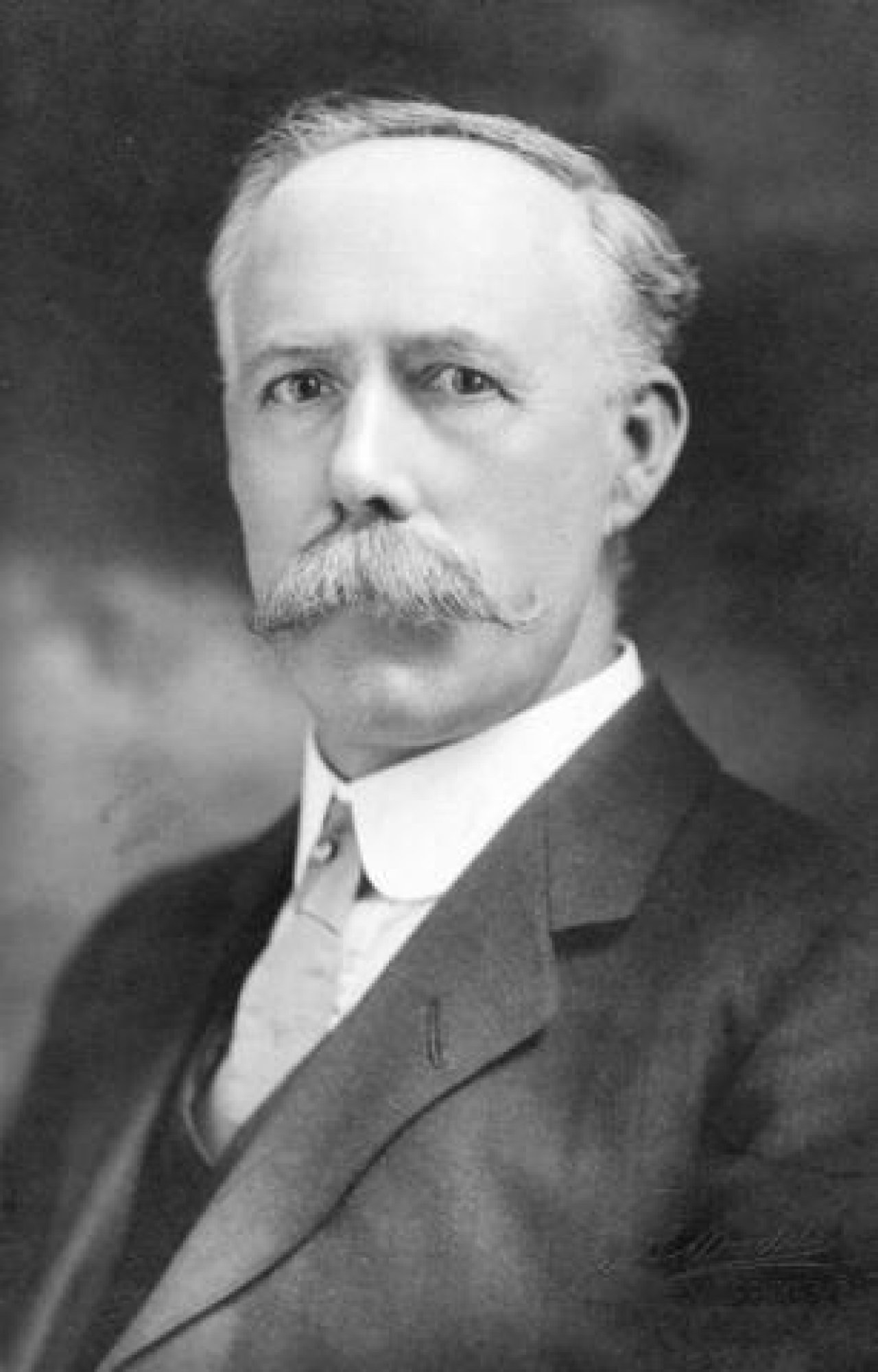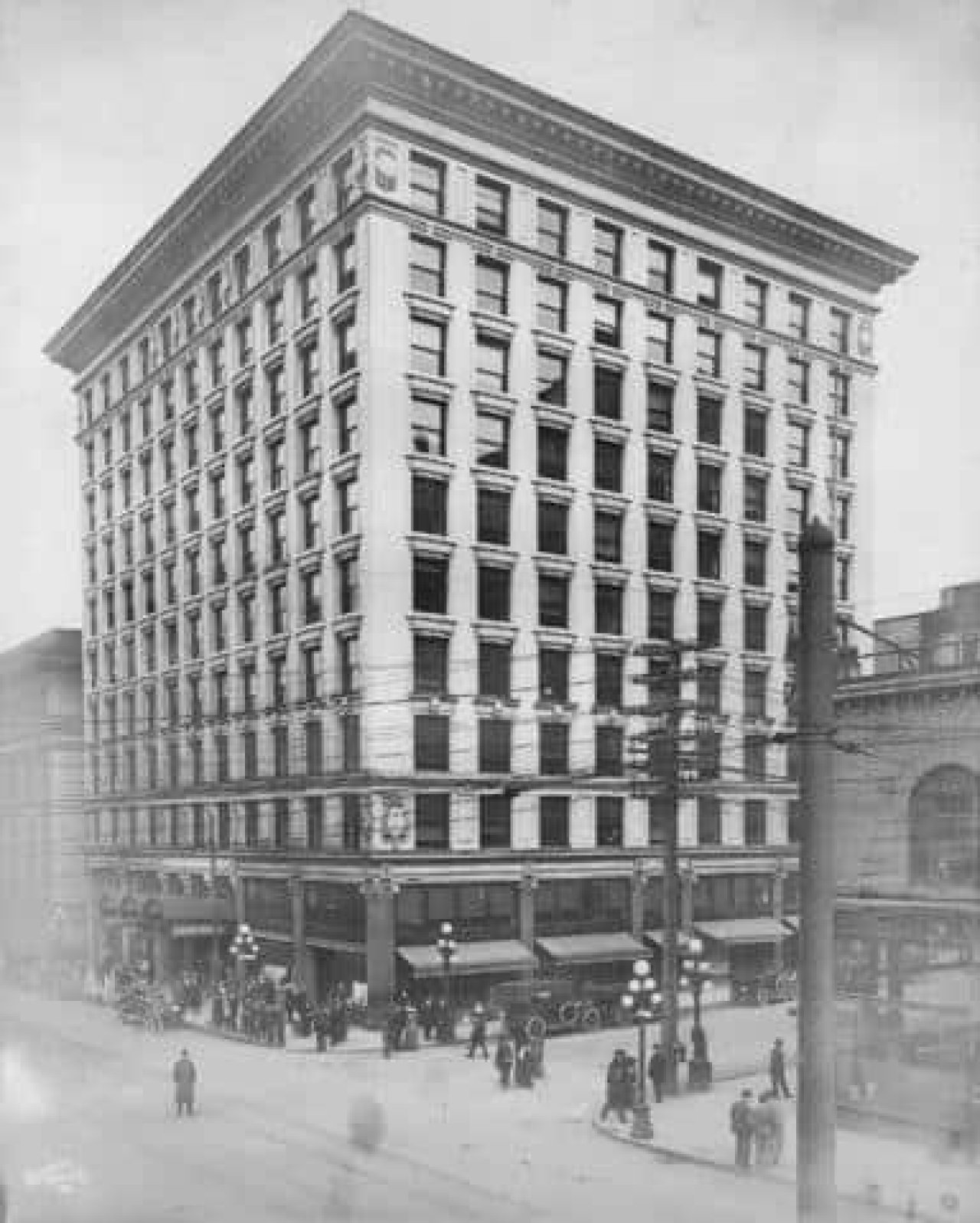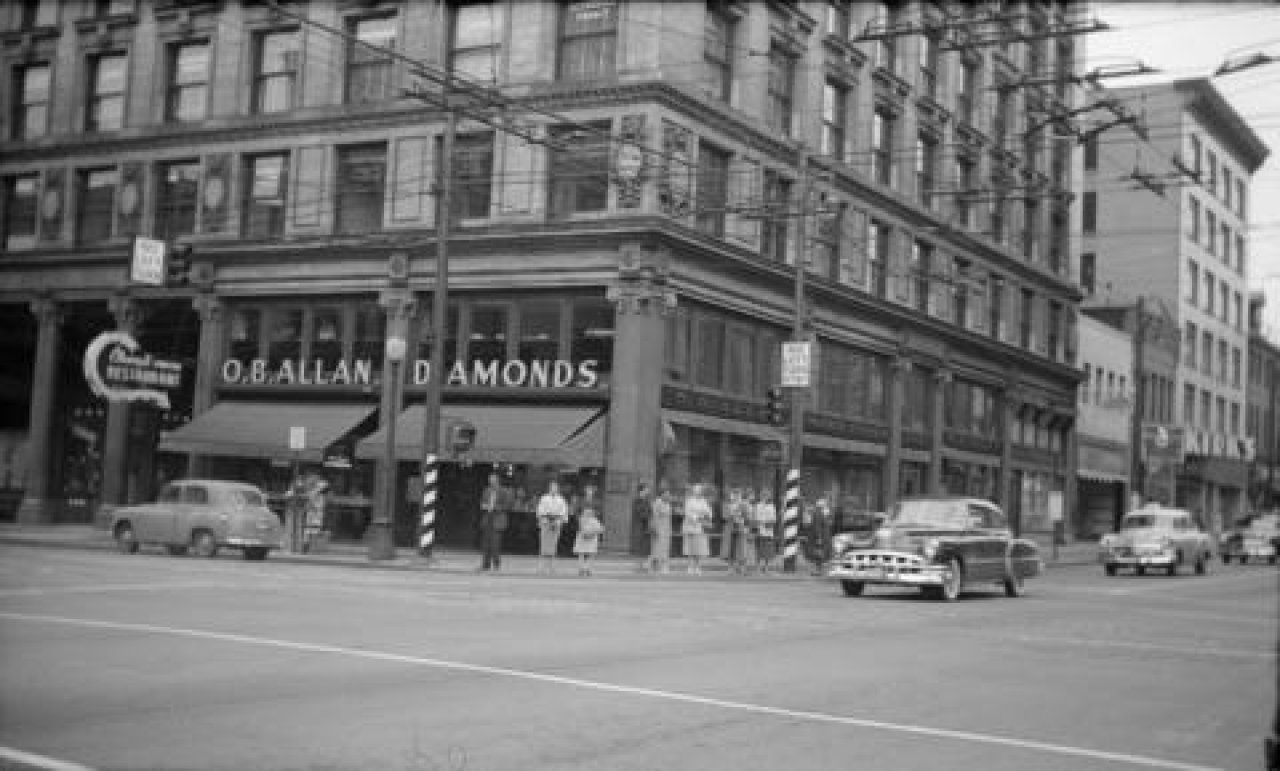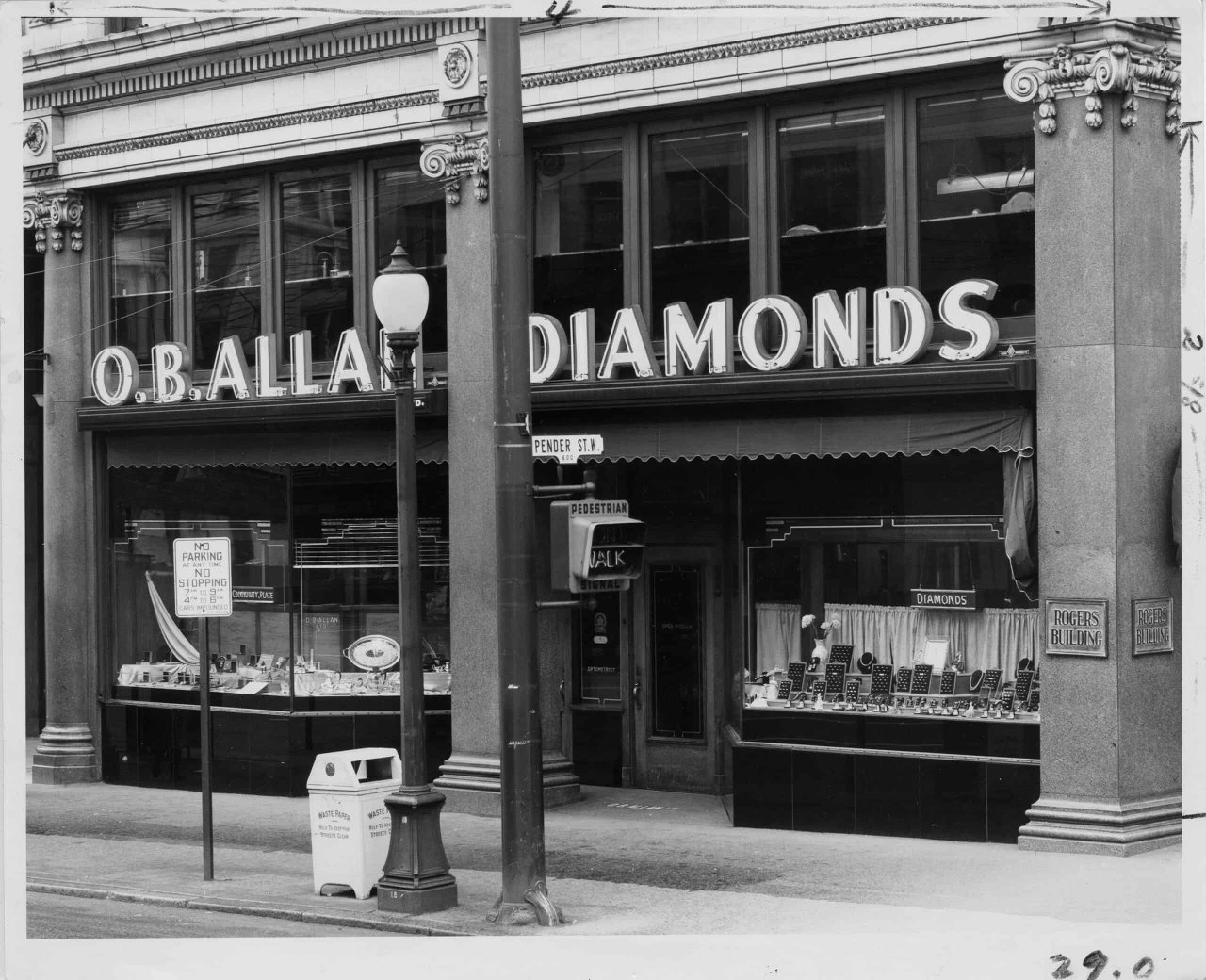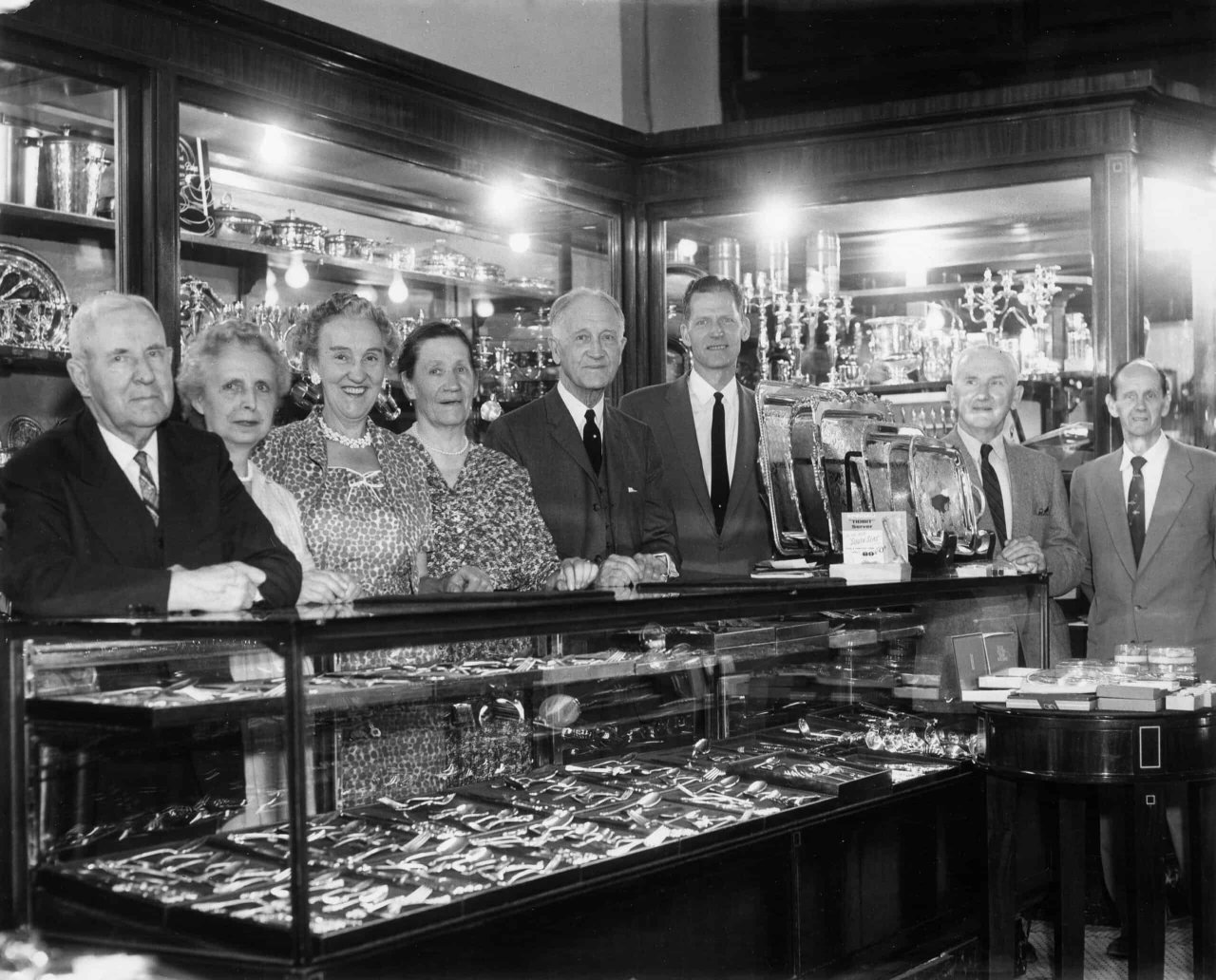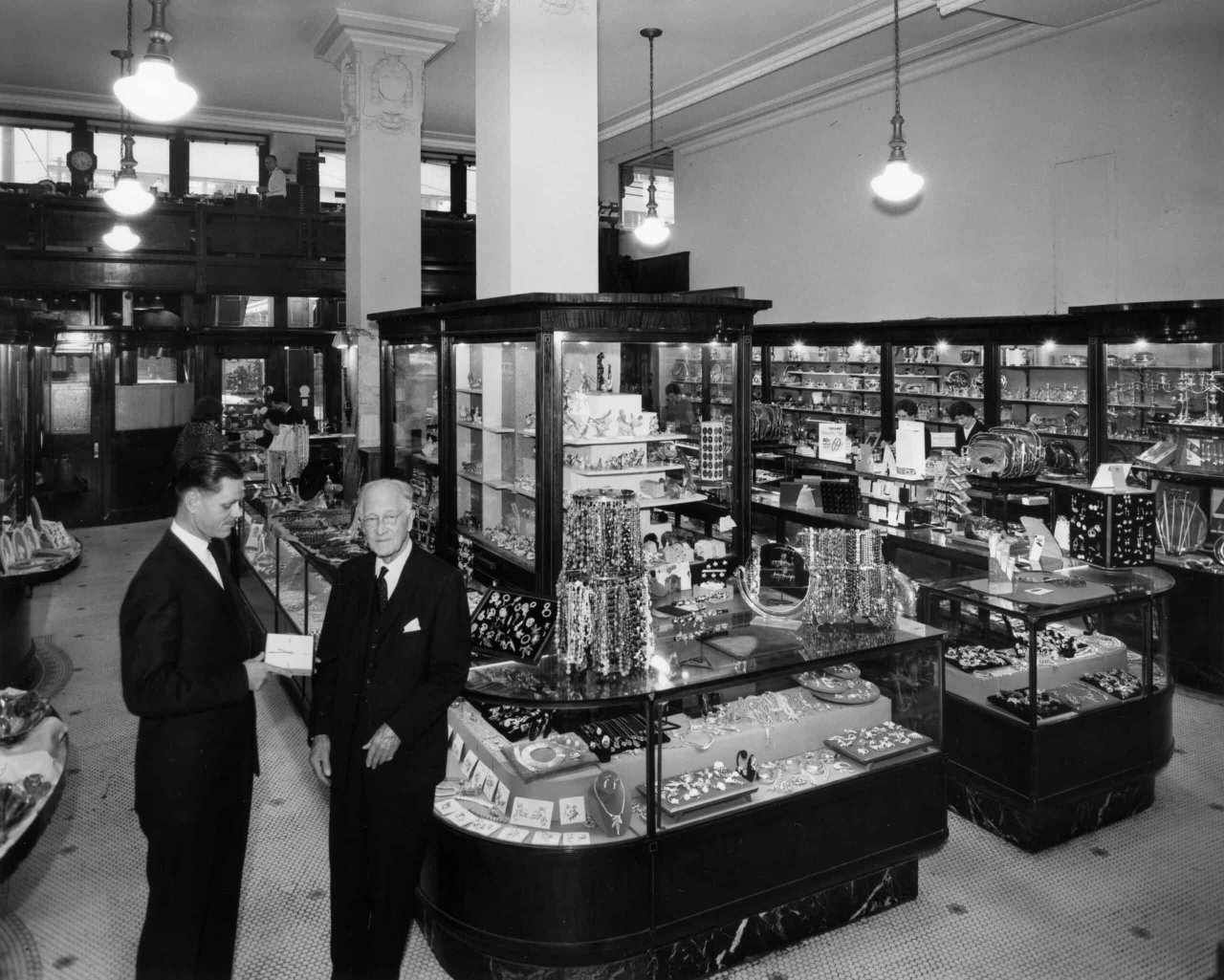Overview
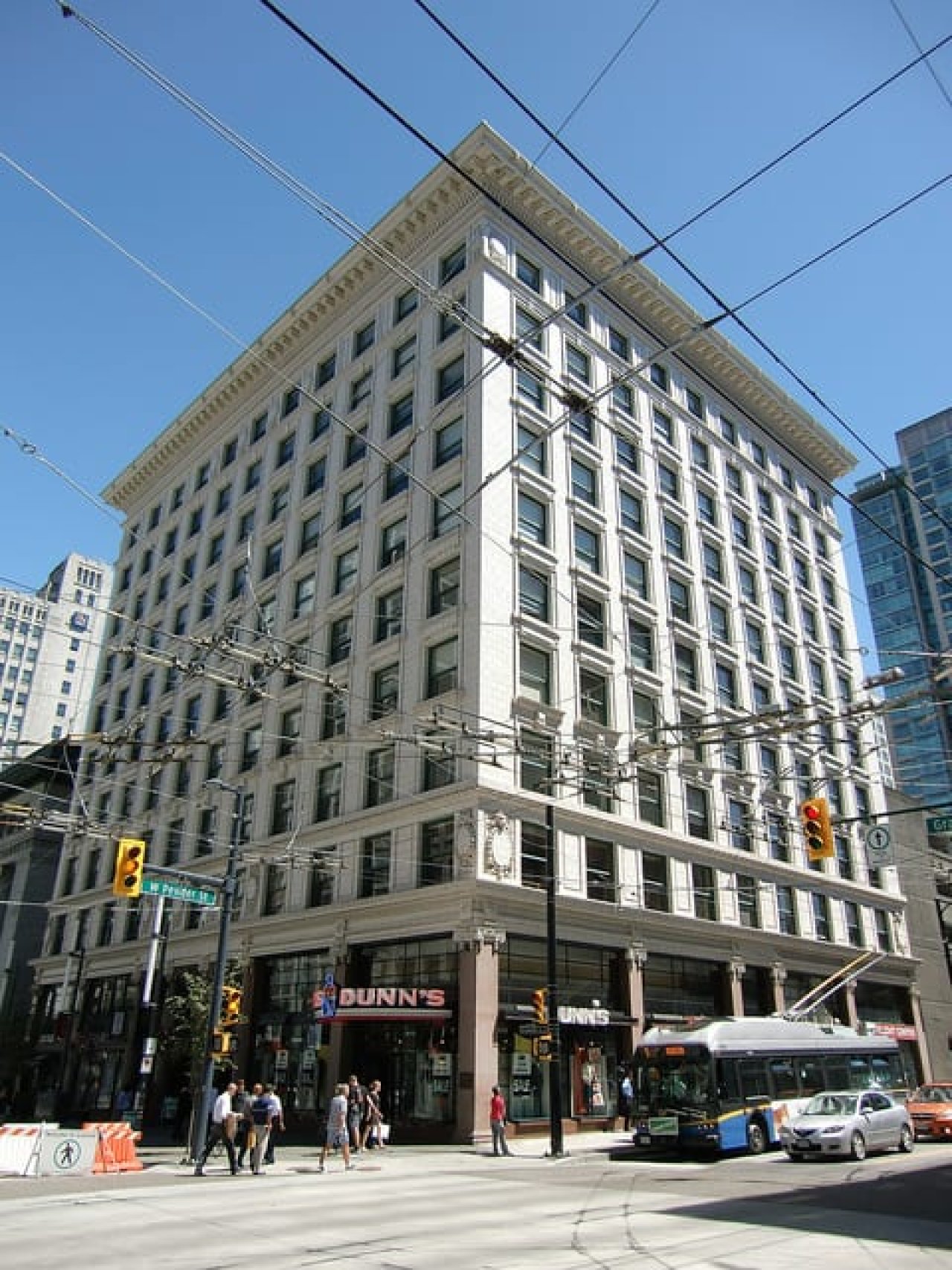
Address
470 Granville St Vancouver BC
Neighbourhood
Downtown
type
Commercial
Description
This landmark structure is indicative of the economic boom in Vancouver in the years before the First World War. Welsh-born Jonathan Rogers arrived in the city in 1887 and rose to become one of the city’s most successful contractors. He was twice president of the Board of Trade, a city councillor, and a Park Board commissioner for a quarter century. He chose the Seattle firm of architects Gould & Champney to design his largest and most prestigious project.
The building permit was issued in 1911 with a listed value of $550,000 and the building was completed in 1912. The 10 storey Rogers Building featured terra cotta from Chicago, ornamental iron from Minneapolis and St. Paul and the five up-to-date elevators brought from Toronto. The Saturday Sunset noted that: “The building will be a monument to Alderman Rogers, whose faith in the future of this city is exemplified in the erection of a building which, when completed, will represent an expenditure of nearly $600,000.”
The Engineering and Contract Record reported “The architect, A. Warren Gould, of the firm of Gould & Champney, and the owner, Jonathan Rogers, are at present visiting Chicago, New York and Toronto, their object being to interview the various manufacturing plants and dealers in highclass finish.” The Daily Province , June 7, 1913 noted that, “at the corner of Pender Street West and Granville Street the Rogers Building is the latest ideas of reinforced concrete construction and the first ten storey of its kind in Canada. The basement excavation is 20 feet, the height almost 120 feet and occupies 120 feet on Granville Street and 104 feet on Pender Street. Marble from Alaska are featured in the halls and from Vermont and Tennessee for the main entrance. The front entrance supporting pillars are of Scotch granite, Aberdeen Scotland and solid bronze doors costing $2500.” With close to 350 office spaces the building was designed so “there is not a dark room in the whole building.” Attention was paid to a changing work force with the provision of “a restroom for women which is equipped with a gas stove for tea and a lady stewardess attends the user.” The building’s ventilation was innovative for the time as was its reinforced concrete frame, something not utilized for such a large building in Vancouver before.
The Architects
Augustus Warren Gould and Edouard Frère Champney’s partnership lasted just three years between 1909 and 1912. The Rogers Building was one of two designs the pair produced for sites in Vancouver. Their second design was submitted for a 1911 Park Board competition for a new animal house and refreshment pavilion in Stanley Park.
Augustus Warren Gould (1871 – 1922) practiced in Boston, Seattle and Vancouver. Gould was born in Nova Scotia and was working in Seattle by 1905. His projects included the American Savings Bank and Empire Building (1906) which were the second and third concrete reinforced structures in the United States, and the King County Courthouse. Gould was not formally trained as an architect, his background was in building and contracting.
Edouard Frère Champney (1874 – 1929) With degrees from Harvard and the Ecole des Beaux-Arts in Paris, Champney began his career with Carrere and Hastings in Buffalo who were the principal designers for the Pan American Exposition of 1901. He would become Assistant Chief Architect for the Louisiana Purchase St. Louis Exposition, worked on the master planning for the 1905 Lewis and Clark Exposition in Portland and became the chief architect for the 1909 Alaskan Yukon Pacific Exposition. In 1912, he was appointed the Chief Architect of the Panama Pacific Exposition in San Francisco.
Albert Gardener Wood (1886 – 1973) Born in New York, Wood moved with his family to Seattle as a teenager and by 1910 was working as an architect. He moved to Vancouver to manage the local office of Gould and Champney and was the supervising architect for the Rogers Building He married his wife Louise in Vancouver in 1912 the same year he formed a brief partnership with A.W. Gould, maintaining an office in the completed Rogers Building. The partnership didn’t last and after a couple of years in Vancouver, Wood moved to Detroit in 1917 where became the head architect for the construction of Henry Ford Hospital and continued his career.
Jonathan Rogers and Elisabeth Rogers
Jonathan Rogers was born at Plas-Onn, near Llangollen in Denbighshire, North Wales, and grew up speaking only Welsh. At 16 he moved to Liverpool where he worked at various jobs while perfecting his English. In May 1887, aged 22 and armed with a legacy left to him by an aunt, Jonathan sailed for Montreal and crossed Canada on the first transcontinental train to Vancouver. Soon after he arrived, Jonathan attended the first public auction of parcels of CPR land within the newly created city. He bought four lots outside the built area at that time, although now located in the heart of downtown. He started work as a painter before becoming a construction contractor.
Rogers was involved in public life, serving for two years on City Council, 26 years as a Park Board commissioner and two terms as president of the Board of Trade. With his wife Elisabeth, he was one of the founders and supporters of the Vancouver Art Gallery and the Vancouver Symphony Orchestra. He supported the YMCA and was a lead proponent in the Prohibition movement in BC.
In 1927, Rogers sold his building to General F.A. “One arm” Sutton for over one million dollars, making it one of the largest real estate transactions in the city at that time. Rogers bought back the building in 1940 and it was later sold by his wife in 1955 to the Koerner Foundation before being sold again in 1976 to the present owners, Equitable Real Estate.
Equitable is notable for its large portfolio of heritage office and apartment buildings.
Tenants
Notable tenants over the years have included the Chinese Consulate and O.B. Allan Jeweller which occupied the south east corner storefront from the building’s opening until the 1980s. When the building first opened the newspapers were thrilled with Sorensen’s Cafeteria, described as a beautifully ventilated, clean, light and airy dining place with an ice cream making machine. “Sorensen’s Cafeteria, Rogers building, open to the public at 11 a.m., Saturday. Lunch in the cleanest and most elaborate cafeteria on the Coast.”
Chuck Davis, Vancouver historian and author maintained an office in the building in the 1990s.
Jonathan Rogers Park
Jonathan died in Vancouver on December 8, 1945 and was buried in Mountain View Cemetery. He left a large estate with funds for a number of causes, including the provision of a park in the Mount Pleasant neighbourhood which was dedicated in 1958 in his name. It occupies a full block bounded by 7th Avenue, Manitoba Street, 8th Avenue and Columbia Street.
Source
Vancouver Sun, Vancouver Province, Canadian and American census for 1900, 1910 and 1920, City of Vancouver Archives, Donald Luxton: Building the West, Metropolitan Vancouver website.
More information
Gallery
Map
Contact
Please Share Your Stories!
Send us your stories, comments or corrections about this site.
